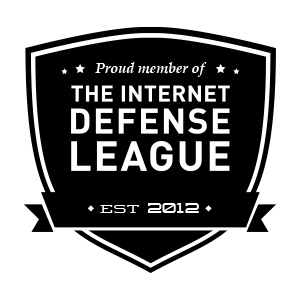Forum Replies Created
-
AuthorPosts
-
It is not normal for a healthy site but it is a well know problem on infected site. It is not uncommon for certain infections to inject .htaccess files into every directory on your site, and those files should be cleaned using the automatic fix option on the scan results page in my plugin.
Sorry I missed this post, are you still having this issue?
The only clue I can see from your video is that there are a lot of Admin Notices warning about output buffer handlers. I would suggest that you start there because it cannot be good for your admin pages (especially my plugin’s scan page) to be running through a custom output buffer handler. If you deactivate all the plugins causing those warnings and the scan still does not start then you will need to look in your error_log file to see what is causing this (your video was not long enough to see if the page would eventually load with some error message).Please let me know if you need any more help with this issue. Also note that a direct email to me will usually get you a faster response

This does not seem to be related to my plugin. I cannot recreate the issue. Can you confirm that the Author section of the Edit Post screen is there if your deactivate my plugin?
Most of them are probably skipped because they are binary files that do not contain code that could be executed on your server (like images and compressed files). Some may also be empty file and are skipped because they cannot contain malicious code if they contain no code at all

You should be able to click on the skipped files count and then hover over the files on that list to display the reason.
You can also change the comma separated list of file extensions that are skipped but that would only slow down the scan process with no better results.
March 13, 2022 at 9:59 am in reply to: Your Installation Key is not registered Plugin Up to Date #63380In general I would say that this kind of issue is most commonly caused by some sort of Javascript error or CSP restrictions on your end. I can’t be certain without more information from you but you can check the Console in your browser to see what error is causing it to fail the reg-check.
Also, you you contact me directly via email then I can help you with any account specific questions, without posting personal details on the forum

For any account specific support you should email me directly so that I can reply privately with your private information.
I have sent a direct email to you with the receipt URL for this donation.
October 25, 2021 at 6:02 am in reply to: COMO VERIFICAR, PASOS PARA VERIFICAR SI HA BLOQUEADO UNA O MAS IP? #53987I don’t speak spanish well but I will try to help you find the answers you are looking for.
My plugin does not block specific IP addresses. The various firewall feature only block malicious activity on a case-by-case basis.
What server or service is being blocked and what makes you think it is my plugin that is blocking it?
No hablo bien español, pero intentaré ayudarte a encontrar las respuestas que estás buscando.
Mi complemento no bloquea direcciones IP específicas. Las diversas funciones del firewall solo bloquean la actividad maliciosa caso por caso.
¿Qué servidor o servicio está bloqueado y qué te hace pensar que es mi complemento el que lo está bloqueando?
I have released a new plugin update which should resolve this issue for you. Please download the new plugin version 4.20.92 and let me know if you are still having any issue with this.
It might be cache that is showing you that updates need to be downloaded. if you see that again try just refreshing the page to see if the it shows that the new updates were actually installed.
If it is still not showing that the updates are current then send me a screenshot of that page with your key visible so that I can see what else might be going wrong.
October 23, 2021 at 7:01 am in reply to: Unable to read Apache Version, this patch may not work! #53866Do you know what version of Apache is running on your server?
What does it say on the right-hand side of the Anti-Malware Settings page in your wp-admin between the PHP version and the WordPress version?
Thanks for posting this screenshot so that I can see where is getting stuck. It appears that the scan process is either running out of memory or else hitting some sort of initial process limit during the preparation phase, before the the scan jobs can even get started. You could check the error_log files on your server to see which might be the case. You should be able to increase the offending limits in your php.ini file on the server but you would need to consult with your hosting provider if you need help with that.
As a temporary workaround you might be able to omit the thumbnails directory (featured in your screenshot) from the scan in order to continue on, and this might cause the scan to run more efficiently as is likely that there are many thousands of images in that thumbnails directory that do not need to be scanned anyway. Try adding the word thumbnails to the list of directories to be skipped and see what happens.
Sorry for the late reply, I didn’t get the notification that you had posted a new topic.
That error means that your site is already registered. If you don’t see that your site is registered in your wp-admin and it is asking you to register again then you probably have something on your end that is caching that response. Try clearing your cache and refreshing your browser and if that doesn’t do it then check that there are no caching plugins enabled that might be caching the registration checking script on your wp-admin page.
As I had stated when I replied to your email about this, you only need to request that they whitelist your own IP address as you will be the one initiating the scans using my plugin on your site. So there will be no outside IP addresses but your own that will need access to the site in order for you to run the Complete Scan using my plugin.
Just wanted to let you know that this issue was fixed with my June plugin release. If you or anyone else has any similar issues then please make sure that you are using the latest version of my plugin then clear your cache, refresh, and try again. Please let me know if you need any more help
Thank you for contacting me for support on this issue. I am very sorry to hear about the trouble you are having with your site. I see how it could have been my plugin that broke your site but I understand how very disappointed you must be and I am more than happy to help you figure it out and fix whatever is wrong. I see that your site appears to be loading fine now and you may have already removed my plugin but could you please tell me exactly what sequence of events caused this crash, what errors you were getting afterwards, and what steps you have already taken to correct the problem?
I sent you an email to help you with this issue but you didn’t reply. Please follow up here if you do not want to email me directly for support…
If there is anything else left unresolved I am standing by to help, and if you don’t want my help then I can understand that but please understand that you are the only person to report this issue and if there is any chance that it was caused by my plugin then I need to know what irregularities might have triggered this unusual circumstance so that I can ensure that it does not happen to anyone else.
Thanks for any information you can provide as your feedback is greatly appreciated.
-
AuthorPosts

